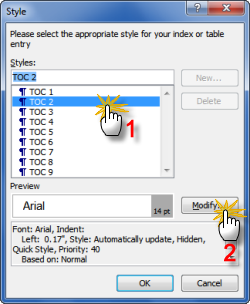


- WORD 2016 TABLE OF CONTENTS PAGE NUMBERS 0 HOW TO
- WORD 2016 TABLE OF CONTENTS PAGE NUMBERS 0 UPDATE
- WORD 2016 TABLE OF CONTENTS PAGE NUMBERS 0 MANUAL
Whenever you make changes to the document, ensure you update the table of contents. Additionally, if you move headings around, or add more pages, the changes will not be reflected in the table. Keeping the table of contents updatedĭespite being called an Automatic Table, this does not necessarily mean that every time you add a new heading it will be added to the table of contents. The page numbers are indicated on the right-hand side of the table. Notice that the titles with the Heading 1 style are above the Heading 2 titles in the list. Word has inserted a table of contents with the corresponding titles and page numbers.
WORD 2016 TABLE OF CONTENTS PAGE NUMBERS 0 MANUAL
Manual Table – You will need to manually populate this table with the headings and page numbersįor this example, I will select the Automatic Table 2.Automatic Table 2 – Similar to the first option, but has some slight formatting differences.Automatic Table 1 – This is a type of table that will be populated based on the headings in the document.By selecting this, you are given a few options. Next, go to the References tab and then find the Table of Contents button on the very left. I have just selected the very top of the document. The first thing you need to do is to click on the document where you would like the table of contents to be inserted. Go ahead and add all of the headings in the document, including any sub-headings. Here you can change the formatting such as the font, font size and color. If you want to edit the style so it looks differently, then simply right-click on Heading 1 in the styles box, and select Modify Style. Notice how the appearance of the heading changes to fit with the style of the Heading 1 style. To add headings in Word, simply add the heading text, highlight it and then go to the Home tab and select a heading (e.g. Now you understand about headings, let’s go and add some. Then any sub-headings under this will be Heading 2, and so and and so forth.įor example, if I was writing a thesis, I could have the following headings: You can think of heading structures like levels.Īny main headings of the piece of work or document are classed as Heading 1. Word will then use these heading to populate the table of contents.īut, before I go ahead and add these, it’s important you understand the different heading structures, as this will affect how the headings appear within the table of contents. Understanding headings in Wordīefore I can create a table of contents, I firstly need to add my headings.
WORD 2016 TABLE OF CONTENTS PAGE NUMBERS 0 HOW TO
In this guide, I’ll show you how to create a table of contents in Microsoft Word. A table of contents is a useful feature to have in long documents, such as a thesis, to allow readers to quickly find what section they are looking for.Ĭreating a table of contents, however, can be a tricky task, especially when you have to keep on updating the page numbers.īut, did you know that there is a feature in Microsoft Word to automatically create one for you? No need to manually add and update page numbers, just let Word do the hard work for you.


 0 kommentar(er)
0 kommentar(er)
